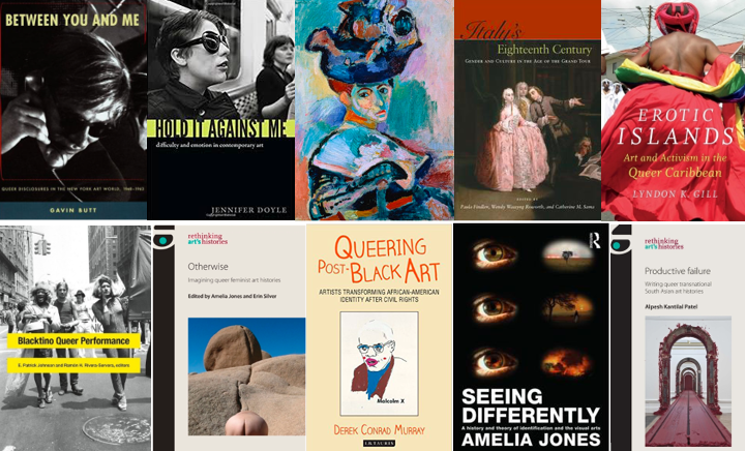CAA News Today
History of CAA’s Committee on Women in the Arts (CWA)
posted by CAA — Jul 29, 2022
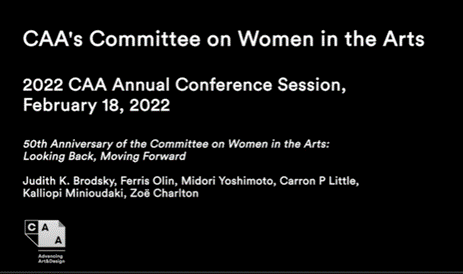
At CAA’s 2022 Annual Conference, current and former members of the Committee on Women in the Arts (CWA) presented a session on the history of feminism at CAA and within their committee entitled “50 Years of Feminist Art at CAA: Looking Back, Looking Forward.” Watch the video below to hear a series of talks on this history.
50 Years of Feminist Art at CAA: Speakers
Chair: Joanna P. Gardner-Huggett, DePaul University
Judith K. Brodsky, Pennsylvania Academy of Fine Arts
Ferris Olin, Rutgers University
Midori Yoshimoto, New Jersey City University
Carron P. Little, School of the Art Institute of Chicago
Kalliopi Minioudaki, Independent Scholar and Curator
Zoë Charlton, American University
Abstract: Fifty years ago, the Committee on Women in the Arts was founded to promote the recognition of women’s valuable contribution to the visual arts and to critical art-historical study; advocate for feminist scholarship and activism in art; develop partnerships with organizations with compatible missions; monitor the status of women in the visual-arts professions; provide historical and current resources on feminist issues; and support emerging artists and scholars in their careers. In 2020, the CWA implemented the 50/50 initiative, which aims for 50% representation of women scholars and artists at the CAA Annual Conference and intersectional feminist content inclusive of race, class, gender, body size, disability, or age. At this significant juncture, this session proposes to reflect on the committee’s history by inviting previous members and chairs to discuss their work with the CWA, as well as collaborations with other affiliate committees and groups, such as the Women’s Caucus for Art, The Feminist Art Project, the Queer Caucus, and many more. In addition to assessing CWA’s past contributions, the panel will engage in a conversation of what work remains to be done.
In 1972, CAA founded its first committees devoted to women in the arts. As a part of this yearlong 50th anniversary celebration, we are sharing historic materials from CAA members and archives that intersect with feminism at the organization, including CAA’s Committee on Women in the Arts (CWA) and our Affiliated Societies, Women’s Caucus for Art (WCA) and The Feminist Art Project (TFAP).
This celebration culminates in a program and reception at Boston University’s Joan and Edgar Booth Theatre on Friday, September 23, 2022. This program will reflect upon the incredible history of feminist pioneers at the organization while looking toward a more inclusive, equitable future through the continued work of the CWA. The members of CWA are carrying the torch of feminism during this crucial time of precarity for women’s rights.
Over the next couple months, visit this site (CAA News) and our social media pages to explore more about this history and items from our archives.
Call for Applicants: CAA Professional Committees (2023–2026)
posted by CAA — Jul 11, 2022
CAA Professional Committees represent the constituent interests of the organization by addressing standards, practices, and guidelines in the professions of our individual and institutional members. Each committee works from a charge that is established by the Board of Directors. For many CAA members, committee service fosters professional relationships, community, and facilitates impactful contributions to pressing issues in the visual arts.
Important Committee Service Information:
- Committee members serve a three-year term. Service for this committee cycle begins in February 2023 at the 111th CAA Annual Conference; service ends in February 2026 at the 114th Annual Conference.
- All applicants are reviewed by current committee members, as well as CAA leadership.
- Appointments will be made by November 1, 2022. New members will be introduced to their committees during their respective business meetings at the February 2023 111th Annual Conference.
- If appointed, applicants are expected to attend committee meetings, participate actively in the work of the committee, and contribute expertise to defining the current and future work of the committee.
- Appointees must be current CAA members before the start of their committee service.
- All committee members volunteer service without compensation.
Please click on the links below to review the mission of each committee, as well as the roster of current committee leadership and members:
- Committee on Design
- Committee on Diversity Practices
- Committee on Intellectual Property
- Committee on Research and Scholarship
- Committee on Women in the Arts
- Education Committee
- International Committee
- Museum Committee
- Professional Practices Committee
- Services to Artists Committee
- Services to Historians of the Visual Arts Committee
- Student and Emerging Professionals Committee
To apply for committee service, please use the APPLY TO SERVE button below to fill out the application form and upload your CV, as well as a brief personal statement describing your interest and experience. Please contact Maeghan Donohue, Manager, Strategic Planning, Diversity & Governance (mdonohue@collegeart.org) with any questions.
Deadline: September 15, 2022
CAA Signs On to Statement Expressing Dismay Over Dobbs vs. Jackson
posted by CAA — Jul 07, 2022
The College Art Association has signed on to this statement from the American Historical Association (AHA) and the Organization of American Historians (OAH). The statement expresses dismay over the Supreme Court majority opinion in the Dobbs v. Jackson Women’s Health decision that overturned Roe v. Wade. It argues that the decision misrepresents history, instead “adopt[ing] a flawed interpretation of abortion criminalization that has been pressed by anti-abortion advocates for more than thirty years.” It warns that the Court’s majority opinion does not meet the standards of historical scholarship and that “[t]hese misrepresentations are now enshrined in a text that becomes authoritative for legal reference and citation in the future.”
CAA-Getty International Program 2023: Applications now open!
posted by CAA — Jul 06, 2022
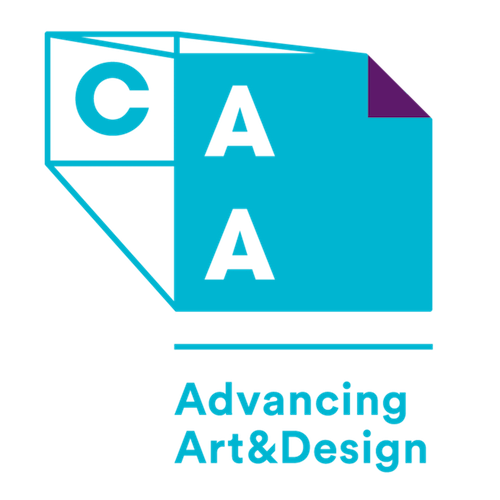
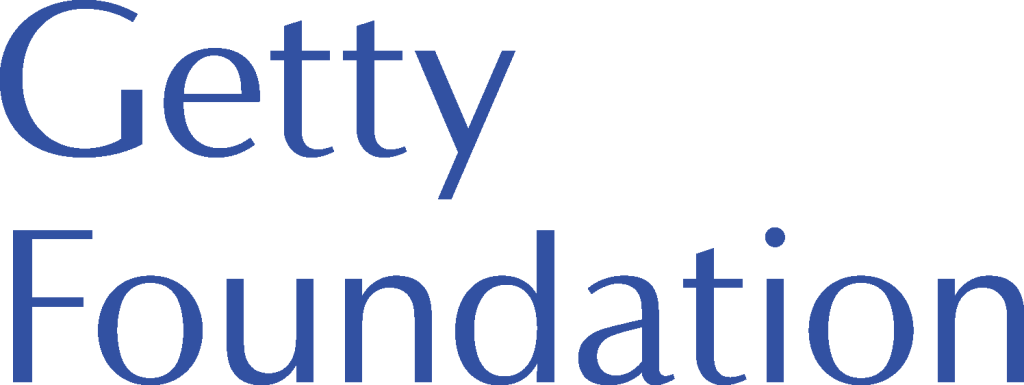
The Getty Foundation has awarded the College Art Association (CAA) a grant to fund the CAA-Getty International Program for a twelfth consecutive year. The Foundation’s support will enable CAA to bring twelve international visual-arts professionals to the 111th Annual Conference, taking place New York, NY, February 15–18, 2023. These individuals will be first-time participants in the program and will be accompanied by alumni of the program returning to present papers during the conference.
Participants will receive funds for travel expenses, hotel accommodations, per diems, conference registrations, and one-year CAA memberships. We encourage all international art historians, art history educators, and museum curators to apply. The program will also include a one-day preconference colloquium on international issues in art history on Tuesday, February 14, as well as ongoing engagement with other alumni from the program online and at future conferences. The deadline for applications is August 15, 2022. Guidelines and application can be found here.
Last year, CAA organized a publication to celebrate ten successful years of the CAA-Getty International Program. The publication, entitled Global Conversations: 10 Years of the CAA-Getty International Program features in-depth accounts of the program, a timeline of important events and milestones, and directories of past papers, members, and meetings.
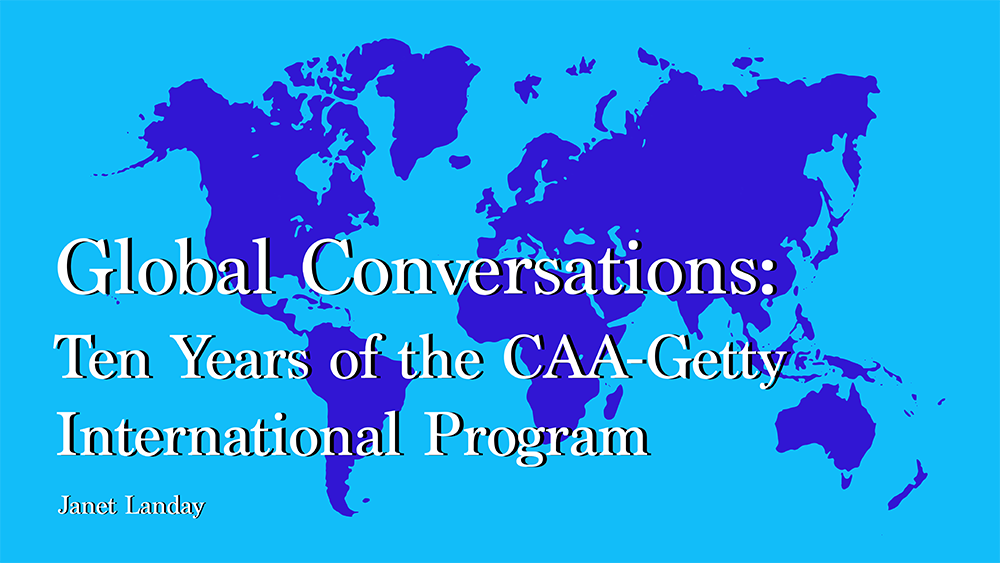
The CAA-Getty International Program was established to increase international participation in CAA and the CAA Annual Conference. The program fosters collaborations between North American art historians, artists, and curators and their international colleagues and introduces visual arts professionals to the unique environments and contexts of practices in different countries.
Since it began in 2012, the program has brought 147 scholars to the conferences, from over 50 countries located in Central and Eastern Europe, Asia, Southeast Asia, Africa, the Caribbean, and Central and South America. Each year, a preconference colloquium on international topics in art history inaugurates the week, kicking off four days of conference sessions, meetings with new colleagues, and visits to museums and galleries. Subsequent to these events, the program has generated many scholarly collaborations, including publications, conferences, and exhibitions.
Most of all, former grant recipients have become ambassadors of CAA in their countries, sharing knowledge gained at the Annual Conference with their colleagues at home. Past recipients have said that “variety of topics presented also exposed me to the realization that there is so much to be done to unearth the hidden treasures of global art history, which hitherto I have overlooked in my discipline and nation but which will now form the basis of my future projects,” and “the direct contact with other global south researchers is an unique occasion, rarely possible and extremely enriching.”
CWA Picks: Summer 2022
posted by CAA — Jun 30, 2022
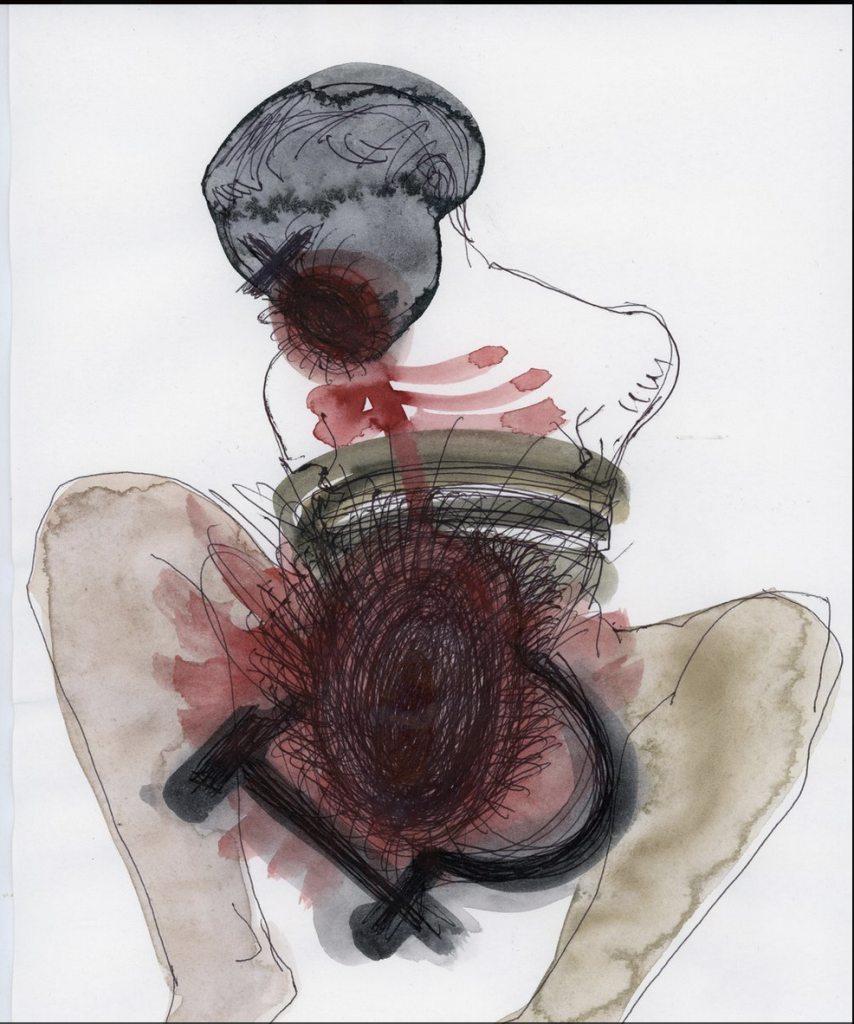
Vlada Ralko, Lviv Diary No. 020, 2022, ink and watercolor on paper, 11.5 x 8.5 inches, ©Vlada Ralko, courtesy of Voloshyn Gallery and Fridman Gallery
Exhibitions and Scholarship Selected by the Committee on Women in the Arts (CWA)
If trauma names the psychic impact of damaging events, it also points to the possibility of working through the mute immobility that is trauma’s primary effect. Gender hierarchies are part of trauma and the recovery from it. In What Does a Woman Want? Reading and Sexual Difference (1993), Shoshana Felman makes a broad and provocative claim: “every woman’s life contains explicitly or in implicit ways, the story of trauma.” The scholarship and exhibitions featured here substantiate Felman’s insight. In a few exhibitions, trauma is pronounced and linked to specific events, such as Russia’s assault on Ukraine. In others, trauma must be discerned in portrayals that attest to the diffuse reality of gender inequity. All of the work tells us that the current historical moment is rife with danger and violence and thereby underscores the necessity of feminism’s insights.
Each month, CAA’s Committee on Women in the Arts selects the best in feminist art and scholarship. The following exhibitions and events should not be missed.
Trauma-Informed Pedagogy: Addressing Gender-Based Violence in the Classroom
Jocelyn E. Marshall and Candace Skibba (eds.)
Emerald Publishing, 2022
What role can teaching play in the effort to address gender-based violence? This collection offers practical, creative, and theoretical strategies for addressing this specific form of trauma in the classroom. The editors assert that teaching can create spaces that counter the “silence” and “unempathetic discourse” that gender-based violence most often meets when it is brought into the open. Featuring the artwork of and scholarship on the indigenous artist Julia Rose Sutherland, as well as a conversation between curators Monika Fabijanska and Dineke Van der Walt, Trauma-Informed Pedagogy foregrounds visual art practices as tools for exploring trauma and finding possibilities for recovery. This makes perfect sense, given the “troublesome visual representations” that block out the fact that gender-based violence is pervasive but systematically denied, a trauma in and of itself.
Women Painting Women
Museum of Modern Art, Fort Worth, Texas
Through September 25, 2022
Feminist art tends to be associated with practices that defy medium, genre, and the art historical canon, but what about the women painters who situate their work firmly in the figurative tradition? Curated by Andrea Karnes, Women Painting Women features the work of forty-six painters who have made women their subjects since the 1960s and illuminates the feminism that can animate figuration. Creatively rendering women’s “bodies, gestures, and individuality,” together these portraits play with a range of scales that move from the modest (Somaya Critchlow) to the gigantic (Jenny Saville) and suggest the spaces allotted to women and the spaces they want to claim. Women Painting Women is a refreshingly straightforward but decidedly necessary theme, given how rare it is to see women as artists and artistic subjects at the same time.
Martine Syms, Neural Swamp
Philadelphia Museum of Art
Through October 30, 2022
Martine Syms’ multi-channel video installation Neural Swamp deploys the tactics of surveillance, cinema, and sport to investigate what it means to be a Black woman in a hyper-digitized world. Blurring the line between horror and humor, Syms works with algorithms and artificial intelligence to question the technologies that erase and exploit Black bodies, voices, and narratives. Accompanied by Kit’s World, a series of videos that also explore technological mediation, Neural Swamp was commissioned by the Future Fields commission in Time-Based Media.
Women at War
Fridman Gallery, New York
July 6 through August 26, 2022
In collaboration with Voloshyn Gallery in Kyiv, Ukraine, Monika Fabijanska curated this timely exhibition that documents how Ukrainian women artists explore the gendered dimensions and consequences of war. Several artworks were made after Russia’s invasion of Ukraine in February 2022, others date from the eight years of war following the annexation of Crimea and the creation of separate ‘republics’ in Donbas in 2014. Together the artwork in Women at War poses questions about women as the natural victims of war and creates a nuanced picture, both of Ukrainian feminism, and the visual practices that have accompanied it. Through a wide array of themes, mediums, styles, Women at War narrates a nuanced history of women in Ukraine and is, more broadly, a historiographic project that meditates on how women become visible when history is written as a war against their agency.
Cornelia Parker
Tate Britain, London
Through October 16, 2022
One of Britain’s most beloved contemporary artists, Cornelia Parker works with domestic objects and reconfigures their scale through playful visual storytelling that often defies gravity. By doing so, Parker’s sculptures materialize the violence that undergirds everyday life and suspends it in the field of vision for all to see.
Ancestors Know Who We Are
Online
National Museum of the American Indian
The Smithsonian, Washington D.C.
Ancestors Know Who We Are is the Smithsonian’s first exhibition to feature Black-indigenous women artists. The title is borrowed from Storm Webber’s 2016 letterpress print, a statement she crafted in black sans serif letters in response to comments that she is neither Black nor Native enough. Across a range of mediums that trouble distinctions between tradition and the contemporary , the artists in this exhibition challenge assumptions that Native and Black experiences have essential and easily discernible features. In so doing, they unsettle the visual economy of race and the permission it gives to question who people are.
Andrea Bowers
Hammer Museum, University of California, Los Angeles
Through September 4, 2022
This is Andrea Bowers’ first museum retrospective and it surveys two decades of her artwork’s intimate connection to activism. A large part of Bowers’ work reframes protest banners and posters to show that political address is a form of creative expression that seeks to imagine and write more just worlds. Isolation and despair haunt this artwork, but the austerity Bowers brings to her images of protest ultimately draws attention to the bravery of individual activists as they seek collectivities that can confront and transform the regressive politics of twenty-first century mobs.
Yayoi Kusama, A Poem in My Heart
Yayoi Kusama Museum
Tokyo, Japan
Through August 28, 2022
This exhibition highlights the Surrealism that pulsates through Yayoi Kusama’s hallucinatory visions. Featuring paintings from the 1950s, viewers can see further into the artist’s inner landscapes and psychic worlds. The artwork overflows with organic, idiosyncratic forms that twist and undulate to reveal the poetics of Kusama’s creative heart.
Suzanne Lacy, The Medium is Not the Only Message
Queens Museum
Queens, New York
Through August 14, 2022
The Medium is Not the Only Message is a major survey of an artist who helped define feminist performance in the 1970s. Lacy has consistently put social issues—sex work, violence against women, racism, labor rights, poverty, and aging—at the center of her work. In recent years, she has become an artist who expands the reach of the museum, bringing institutions into the public worlds in which they are situated. This exhibition focuses on two dimensions of Lacy’s practice: personal narrative and conversation. Both underscore the value she places on relationality, co-creation, and mutual learning, all of which rebuff the presumption that technological mediums really allow people to communicate with each other. Featured projects were selected for their connections to Queens and demonstrate Lacy’s commitment to community-based practices that move “Between the Door and the Street,” the title of a 2013 project that featured women talking about the issues that impact their lives.
Join our Board of Directors
posted by CAA — Jun 09, 2022
CAA seeks nominations for individuals passionate about shaping the future of the organization by serving on the Board of Directors for the 2023-2027 term. The board is responsible for all financial and policy matters related to CAA, promoting excellence in scholarship, and encouraging creativity and technical skills in design and art practice. CAA’s board is also charged with representing the membership regarding current issues affecting the visual arts and the humanities.
Candidates must be current CAA members. Nominations and self-nominations should include a short statement of interest, a résumé, and the following information: the nominee’s name, affiliation, email address, and telephone number, as well as the name, affiliation, and email address of the nominator if different from the nominee. Please send all information and/or any questions via e-mail to Maeghan Donohue, Manager, Strategic Planning, Diversity, and Governance. Deadline: July 8, 2022.
Pride Month and Art Journal Open
posted by CAA — Jun 08, 2022
This Pride Month, we highlight the rich scholarship and programs produced at CAA that center LGBTQ+ topics, as well as gender and sexual identity, in the fields of visual arts and the humanities. This week, we are sharing a bibliography of articles on these topics from our open-access journal Art Journal Open.
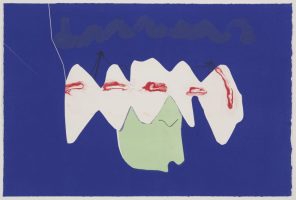 |
Downey, Kerry. “Creating Good-Enough Containers: Reflections on Queerness in Community-Based Museum Education.” Art Journal Open (January 9, 2019).
Kerry Downey, They said to the ocean, 2016, monotype with chine-collé, 19 x 13.5 in. Printed with Marina Ancona / 10 Grand Press. |
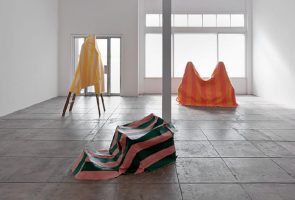 |
Doyle, Jennifer and David Getsy. “Queer Formalisms: Jennifer Doyle and David Getsy in Conversation.” Art Journal Open (March 31, 2014).
Math Bass, Body No Body Body, 2012, latex paint on canvas and wood, installation view, Overduin and Kite, Los Angeles, 2012 (artwork © Math Bass; photograph provided by Overduin and Kite) |
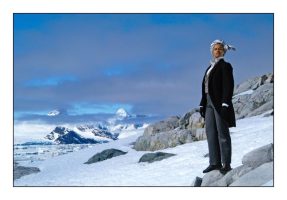 |
Getsy, David J. and Che Gossett, “A Syllabus on Transgender and Nonbinary Methods for Art and Art History.” Art Journal Open (February 4, 2022). Crossover article from Art Journal, 80, no. 4 (Winter 2021).
Del LaGrace Volcano, Moj of the Antarctic: On the Mountain, Antarctica, 2005, giclée print, 30 x 36 in. (76.2 x 91.4 cm) (artwork © Del LaGrace Volcano) |
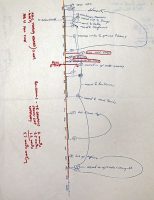 |
Latimer, Tirza True. “Introduction: Conversations on Queer Affect and Queer Archives.” Art Journal Open (October 24th, 2013). Crossover article from Art Journal 72, no. 2 (Summer 2013).
Veronica Friedman, Pages from monthly planners, 1980 and 1981. Veronica Friedman Papers, Gay, Lesbian, Bisexual, Transgender Historical Society, San Francisco (photograph © Barbara McBane) |
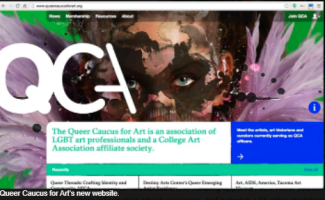 |
Queer Caucus for Art. “Update from the Queer Caucus for Art.” Art Journal Open (January 26, 2016). |
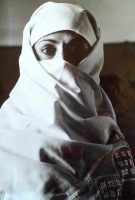 |
Rosa, Maria Laura. “Questions of Identity: Photographic Series by Alicia D’Amico, 1983–86.” Art Journal Open (July 2, 2019). Crossover article from Art Journal 78, no. 1 (Spring 2019).
Alicia D’Amico photograph of Liliana, a performance by Liliana Mizrahi, 1983, scanned copy of original negative, reproduction from original 35mm negative contact (photograph © Archivo Alicia D’Amico, Buenos Aires) |
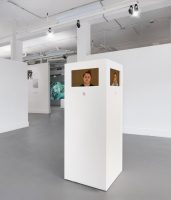 |
Shvarts, Aliza. “Toward a Reparative Pedagogy: Art as Trigger, Art as Repair.” Art Journal Open (April 7, 2022).
|
 |
Whitener, Brian. “Transiting in Anti-Patriarchal Worlds: The Queer Photography of Fernando Fuentes.” Art Journal Open (November 18, 2021).
Fernando Fuentes, “Emma” (with Homero Emma Jimenez), 2020 (photograph by Constanza Moctezuma) |
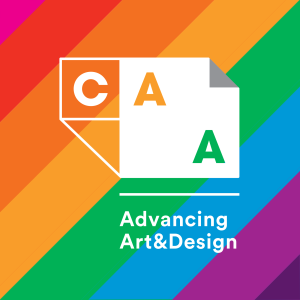
Pride Month and caa.reviews
posted by CAA — Jun 02, 2022
This Pride Month, we highlight the rich scholarship and programs produced at CAA that center LGBTQ+ topics, as well as gender and sexual identity, in the fields of visual arts and the humanities. This week, we are sharing a bibliography of publications and exhibitions on these topics reviewed this past year on our open-access journal caa.reviews.
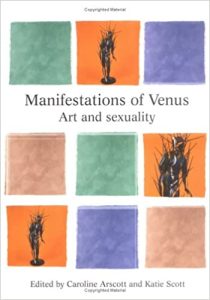 |
Arscott, Caroline and Katie Scott, editors. Manifestations of Venus: Art and Sexuality. Manchester: Manchester University Press, 2001. |
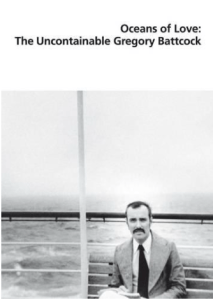 |
Battcock, Gregory. Oceans of Love: The Uncontainable Gregory Battcock. Ed Joseph Grigely, Cologne, Germany: Verlag der Buchhandlung Walther Konig, 2016. |
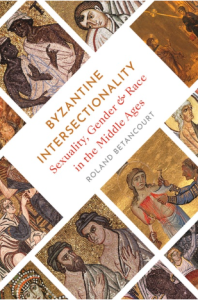 |
Betancourt, Roland. Byzantine Intersectionality: Sexuality, Gender, and Race in the Middle Ages. Princeton, NJ: Princeton University Press, 2020. |
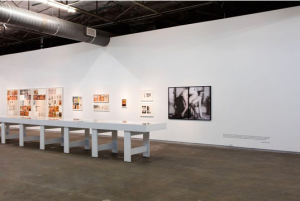 |
Black Sheep Feminism: The Art of Sexual Politics. Dallas: Dallas Contemporary, 2016. |
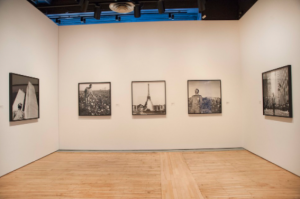 |
Brandt, Amy ed. Tseng Kwong Chi: Performing for the Camera. Norfolk, VA and New York: Chrysler Museum of Art, Grey Art Gallery, New York University, and Lyon Artbooks, 2015. |
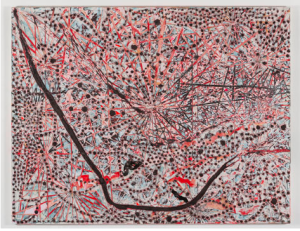 |
Butler, Connie. Mark Bradford: Scorched Earth. Exh. cat. Los Angeles: Hammer Museum in association with Prestel, 2015.
Mark Bradford. Lights and Tunnels, 2015 (photograph © 2015 Joshua White; provided by Hauser & Wirth) |
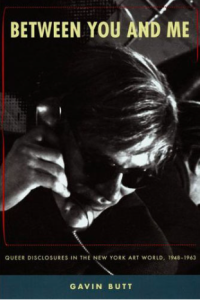 |
Butt, Gavin. Between You and Me: Queer Disclosures in the New York Art World, 1948–1963. Durham, NC: Duke University Press, 2005.
|
 |
De Salvo, Donna. Andy Warhol: From A to B and Back Again. Exh. cat. New Haven and New York: Yale University Press in association with The Whitney Museum of American Art, 2018.
Installation view, Andy Warhol—From A to B and Back Again, Whitney Museum of American Art, New York, November 12, 2018–March 31, 2019 (photograph © 2018 by Ron Amstutz, provided by The Andy Warhol Foundation for the Visual Arts, Inc./Licensed by Artists Rights Society [ARS], New York) |
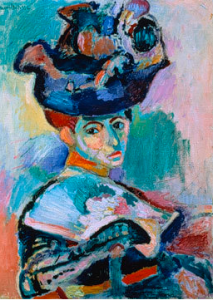 |
Corn, Wanda M. and Tirza True Latimer. Seeing Gertrude Stein: Five Stories. Exh. cat. Berkeley: University of California Press, 2011.
Henri Matisse. Woman with a Hat (1905). Oil on canvas. 31 3/4 x 23 1/2 in. (80.7 x 59.7 cm). SFMOMA, Bequest of Elise S. Haas. © Succession H. Matisse, Paris / Artists Rights Society (ARS), New York. Photo: Ben Blackwell |
 |
Doyle, Jennifer. Hold It Against Me: Difficulty and Emotion in Contemporary Art. Durham: Duke University Press, 2013. |
 |
Findlen, Paula, Wendy Wassyng Roworth, and Catherine M. Sama, editors. Italy’s Eighteenth Century: Gender and Culture in the Age of the Grand Tour. Stanford: Stanford University Press, 2009. |
 |
Gallucci, Margaret A. Benvenuto Cellini: Sexuality, Masculinity, and Artistic Identity in Renaissance Italy. New York: Palgrave Macmillan, 2003. |
 |
Gill, Lyndon K. Erotic Islands: Art and Activism in the Queer Caribbean. Durham, NC: Duke University Press, 2018. |
 |
Gómez-Barris, Macarena. Beyond the Pink Tide: Art and Political Undercurrents in the Americas. American Studies Now: Critical Histories of the Present. Oakland: University of California Press, 2018. |
 |
Guyton, Wade. One Month Ago. Edition of 500. New York: Karma, 2014. |
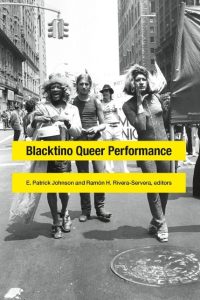 |
Johnson, E. Patrick and Ramón H. Rivera-Servera, editors. Blacktino Queer Performance. Durham: Duke University Press, 2016. |
 |
Jones, Amelia. Seeing Differently: A History and Theory of Identification and the Visual Arts. New York: Routledge, 2012. |
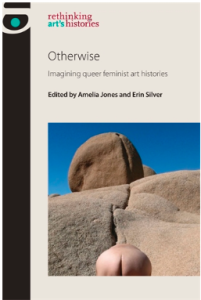 |
Jones, Amelia and Erin Silver. Otherwise: Imagining Queer Feminist Art Histories. Manchester: Manchester University Press, 2016.
With follow-up interview between Amelia Jones and David J. Getsy, Abstract Bodies and Otherwise: A Conversation with Amelia Jones and David Getsy on Gender and Sexuality in the Writing of Art History. February 16, 2018 |
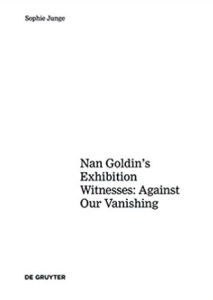 |
Junge, Sophie. Art about AIDS: Nan Goldin’s Exhibition Witnesses: Against Our Vanishing Berlin: De Gruyter, 2017. |
 |
Katz, Jonathan David and Rock Hushka, editors. Art AIDS America. Exh. cat. Seattle: Tacoma Art Museum in association with University of Washington Press, 2015.
Courtesy of the Zuckerman Museum of Art. Photos by Mike Jensen |
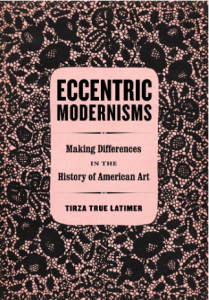 |
Latimer, Tirza True. Eccentric Modernisms: Making Differences in the History of American Art. Oakland: University of California Press, 2016. |
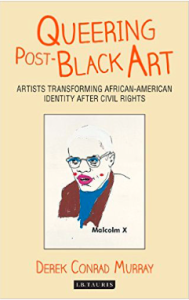 |
Murray, Derek Conrad. Queering Post-Black Art: Artists Transforming African-American Identity after Civil Rights. London: I.B. Taurus, 2016. |
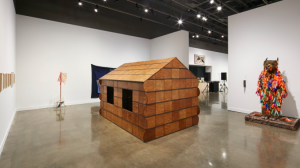 |
No Wrong Holes: Thirty Years of Nayland Blake. Institute of Contemporary Art, Los Angeles, September 29, 2019–January 26, 2020; MIT List Visual Arts Center (online), Cambridge, MA, October 16, 2020–February 14, 2021.
No Wrong Holes: Thirty Years of Nayland Blake, installation view, MIT List Visual Arts Center, Cambridge, MA, 2020–21 (photograph © Charles Mayer, provided by MIT List Visual Arts Center) |
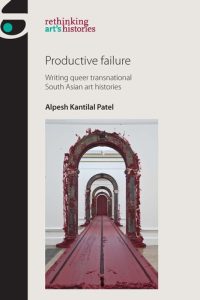 |
Patel, Alpesh Kantilal. Productive Failure: Writing Queer Transnational South Asian Art Histories. Manchester, UK: Manchester University Press, 2017. |
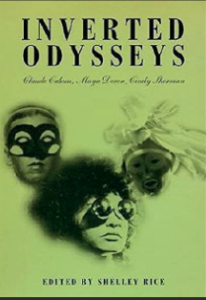 |
Rice, Shelley. Inverted Odysseys: Claude Cahun, Maya Deren, Cindy Sherman. Cambridge, Mass.: MIT Press, 1999. |
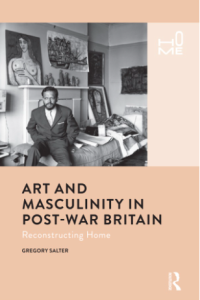 |
Salter, Gregory. Art and Masculinity in Post-War Britain: Reconstructing Home. London: Routledge, 2019. |
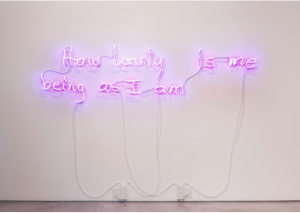 |
Transamerica/n: Gender, Identity, Appearance Today. McNay Art Museum, San Antonio, June 20–September 15, 2019.
Jacolby Satterwhite, How lovly is me being as I am, 2014, neon, installation view from Transamerica/n: Gender, Identity, Appearance Today, McNay Art Museum, San Antonio, 2019 (artwork © Jacolby Satterwhite; photograph provided by the artist and Morán Morán, Los Angeles) |
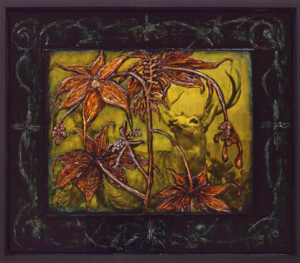 |
Tony Greene: Room of Advances. MAK Center for Art and Architecture, Schindler House, Los Angeles, June 18–September 7, 2014.
Tony Greene. His Puerile Gestures (1989). Mixed Media. 25 1/2 x 29 3/4 in. Collection of Ray Morales, from the estate of Norm MacNeil |
 |
Turner, James Grantham. Eros Visible: Art, Sexuality and Antiquity in Renaissance Italy. New Haven: Yale University Press, 2017. |
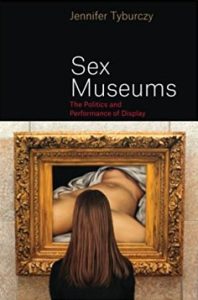 |
Tyburczy, Jennifer. Sex Museums: The Politics and Performance of Display. Chicago: University of Chicago Press, 2016. |
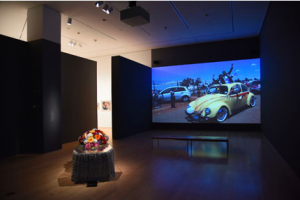 |
Zanele Muholi: Isibonelo/Evidence. Brooklyn Museum, New York, May 1–November 8, 2015.
Zanele Muholi: Isibonelo/Evidence. Installation view. Courtesy of the Brooklyn Museum. |

Announcing the Terra Foundation for American Art Research Travel Grant Recipients for 2022
posted by CAA — May 09, 2022
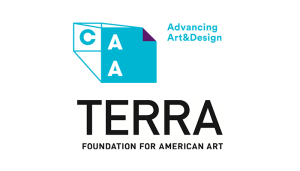
We’re delighted to announce that twenty-four scholars have been awarded Terra Foundation for American Art Research Travel Grants in 2022.
These grants provide support to doctoral, postdoctoral, and senior scholars from both the US and outside the US for research topics dedicated to the art and visual culture of the United States prior to 1980.
The Terra Foundation prioritizes projects that interrogate and broaden definitions of American art and lends support for projects engaged in transforming or complicating how the story of American art is told. To expand histories of American art, we encourage projects that reflect a commitment to inclusive and equitable research and museum practice; generate new scholarship and interpretive frameworks; employ critical methodologies and innovative models; and/or engage diverse partners and audiences.
INTERNATIONAL RESEARCH TRAVEL GRANTS FOR US-BASED SCHOLARS
Doctoral Scholars
Manon Gaudet, Yale University, “Beyond Landscape: Property and the Contested Ground of North American Visual Culture, 1900-1945”
Michaela Haffner, Yale University, “The Visual Culture of Naturopathic Cures & the Fashioning of White Wellness”
Annie Ochmanek, Columbia University, “Conceptualism and the Connexionist World: The Art of Eduardo Costa, Hannah Weiner, Christine Kozlov, and Stanley Brouwn”
Constanza Robles, Boston University, “Visualizing Alliances through Art and Architecture: Pan Americanism, Hispanismo and Latin Americanism in World Fairs, 1901-1929”
Lea Stephenson, University of Delaware, “’Wonderful Things’: Egyptomania, Empire, and the Senses, 1870-1922”
Postdoctoral & Senior Scholars
Maria Elena Buszek, University of Colorado, Denver, “Art of Noise: Feminist Art and Popular Music
John J. Curley, Wake Forest University, “Critical Distance: Black American Artists in Europe 1957-1968”
Emily Voelker & Erin Hyde Nolan, UNC Greensboro and Maine College of Art, “Reading Native American Portraits in Ottoman: Global Economies of Nineteenth-century Survey Photograph”
INTERNATIONAL RESEARCH TRAVEL GRANTS TO THE UNITED STATES
Doctoral Scholars
Marion Belouard, University of Limoges, “Painting nature, exchanging knowledge. John James Audubon (1785-1851), a rare bird in Atlantic history?”
Cora Chalaby, University College London, “Control Systems: Helen Frankenthaler, Joan Mitchell, Alma Thomas, and Howardena Pindell’s Orderly Abstractions”
Clara Johanna Lauffer, Central Institute for Art History, Munich, “Rewriting the ‘pictures generation’: the production of white masculinity in appropriation art”
Mylène Palluel, Université Paris 1 Panthéon-Sorbonne, “The ‘Longue durée’ paradigm in 1960s American art and social sciences. Case studies in Minimal Art, Conceptual Art and Land Art”
Mona Schubert, University of Cologne, “Photographic Media at documenta in the 1970s and the US-American Art Scene”
Clara Royer, Université Paris 1 Panthéon-Sorbonne, “Slow-Scan: the (geo)political turn of media arts (1960-1990)”
Yana Shtilman, Université de Paris, “Public image, private lives: Creating the image of the “New Negro” woman in the Harlem Renaissance (1920-1943)”
Achang Su, China Academy of Art, “The Identity Issues and Abstract Transformation in the works of Modern Chinese-American Artist George Chann from 1950s to 1960s”
Postdoctoral & Senior Scholars
Alice Butler, Courtauld Institute of Art, “The Perversions of Textile in Feminist Art”
Anne-Claire Faucquez, Université Paris 8, “The narrativization of colonial slavery in American museums: arts and representations” (collaborating with Androula Michael)
Roula Matar, École nationale supérieure d’architecture de Versailles, “James Johnson Sweeney’s Contribution to a Critical and Didactical Approach to Exhibition Installation”
Androula Michael, Université de Picardie Jules Verne – UFR des arts, “The narrativization of colonial slavery in American museums: arts and representations” (collaborating with Anne-Claire Faucquez)
Yvonne Schweizer, Eberhard Karls Universität Tübingen, “Linking Mediatization and Mediation. Art Institutions as Media Producers since 1970”
Harry Weeks, Newcastle University, “The Artist’s Second Shift”
Andrew Witt, Humboldt-Universität zu Berlin, “Exile Modernism: Photography c. 1940”
LEARN MORE ABOUT THE TERRA FOUNDATION RESEARCH TRAVEL GRANTS
Nominations Open for CAA Juries
posted by CAA — Apr 21, 2022
CAA invites nominations and self-nominations for individuals to serve on our Awards for Distinction, Publication Grant, Fellowship, and Travel and Support Grant juries. Terms begin July 2022.
Candidates must possess expertise appropriate to the jury’s work and be current CAA members. They should not hold a position on a CAA committee or editorial board beyond May 31, 2022. CAA’s president and vice president for committees appoint jury members for service. Materials are due to CAA by June 1, 2022.
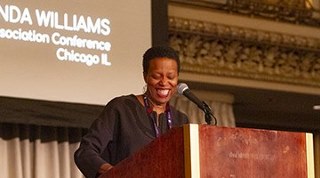
Amanda Williams speaks at Convocation at CAA’s 108th Annual Conference in Chicago
AWARDS FOR DISTINCTION JURIES
CAA has vacancies in the following juries for the annual Awards for Distinction for three years (2022–2025). Terms begin in July 2022.
- The Alfred H. Barr Jr. Award/Alfred H. Barr Jr. Award for Smaller Museums, Libraries, Collections, and Exhibitions for museum scholarship (3 vacancies)
- Charles Rufus Morey Book Award for non-catalogue books in the history of art (2 vacancies)
- Frank Jewett Mather Award for art criticism (1 vacancy)
- Arthur Kingsley Porter Prize for Art Bulletin articles (2 vacancies)
- The CAA/American Institute for Conservation Award for Distinction in Scholarship and Conservation (2 vacancies)
- Jury for the Artist Award for Distinguished Body of Work, Distinguished Artist Award for Lifetime Achievement, and Distinguished Teaching of Art Award (1 vacancy)
- Jury for the Distinguished Teaching of Art History Award and the Distinguished Lifetime Achievement Award for Writing on Art (3 vacancies)
- Distinguished Feminist Awards for Scholars and Artists (1 vacancy)
PUBLICATION GRANT JURIES
CAA has vacancies on our Publication Grant juries for three years (2022–2025). Terms begin in July 2022.
- Millard Meiss Publication Fund (2 vacancies)
PROFESSIONAL DEVELOPMENT FELLOWSHIP JURIES
CAA has vacancies on our Professional Development Fellowship juries for three years (2022–2025). Terms begin in July 2022.
- Professional Development Fellowship in Art History (2 vacancies)
TRAVEL/SUPPORT GRANT JURIES
CAA has vacancies on our jury for three years (2022–2025). Terms begin in July 2022.
- CAA Support Grant in Memory of Archibald Cason Edwards, Senior, and Sarah Stanley Gordon Edwards (2 vacancies)
- Art History Fund for Travel to Special Exhibitions (2 vacancies)
HOW TO APPLY
Nominations and self-nominations should include a brief statement (no more than 150 words) outlining the individual’s qualifications and experience and a CV (an abbreviated CV no more than two pages may be submitted). Please send all materials by email to Cali Buckley: cbuckley@collegeart.org. Nominations must be sent as a Microsoft Word or Adobe PDF attachment.
For questions about jury service and responsibilities, contact info@collegeart.org.
Deadline: June 1, 2022



